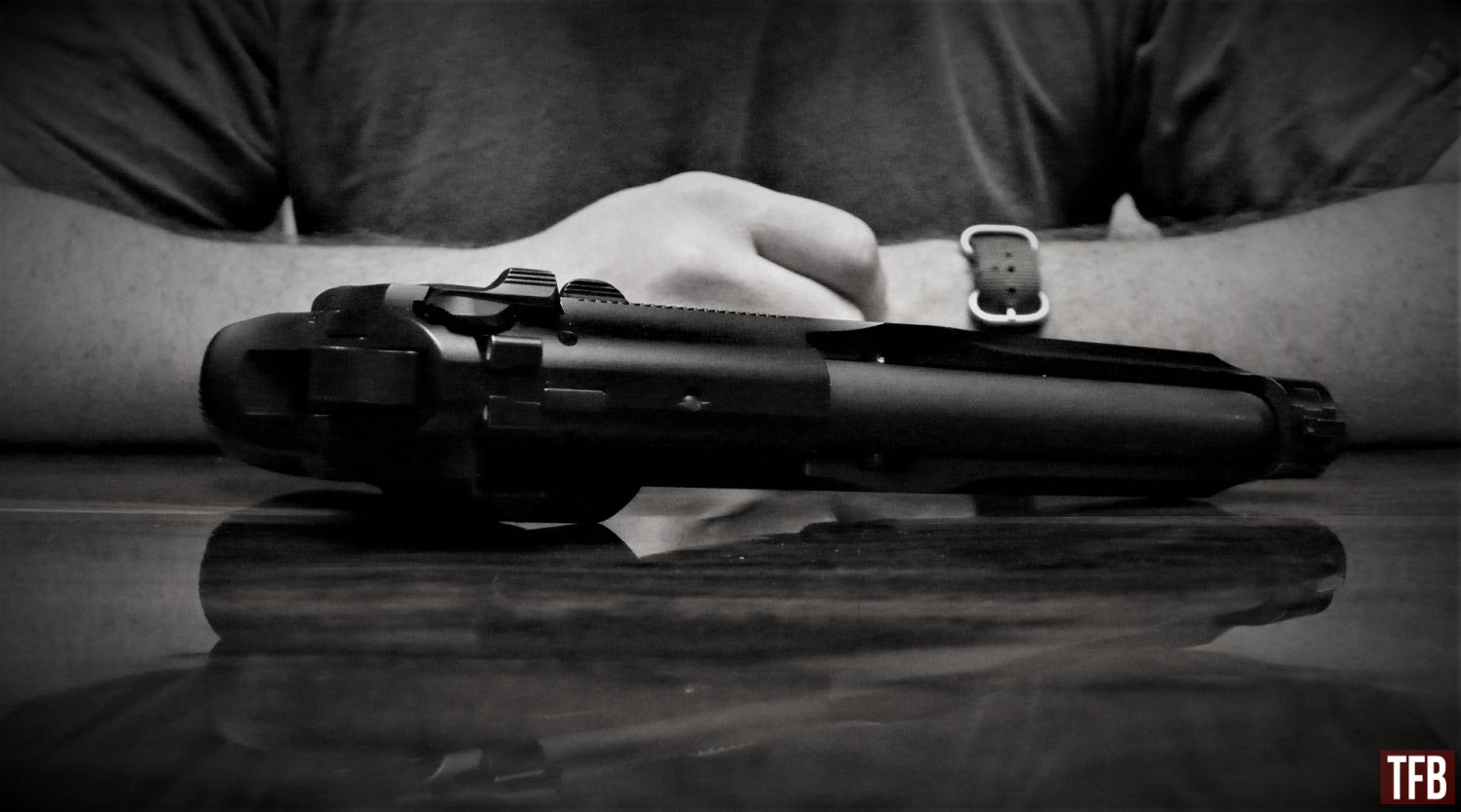The Supreme Court of the United States recently took up its first firearm-related case since 2010, Caniglia v. Strom. The new Supreme Court firearms case stems from an incident in 2015, in which the Cranston Police Department in Rhode Island seized the Caniglia’s firearms after an implied suicidal statement. The case was moreso a Fourth Amendment issue, but also very much tied to firearms since a firearm was involved in the incident, as was the “community caretaking” exemption case that the police based their seizure on.
The following summary is from TFB’s coverage on this case when the Supreme Court took up the case. If you’ve already read our previous article or are already aware of the particulars of Caniglia v. Strom, feel free to skip to the next section.
SCOTUS Eyes Whether Police Can Seize Guns From Homes Without Warrants
SCOTUS Declines To Hear All Firearms Related Cases (2020)
SUMMARY OF CANIGLIA V. STROM
The incident occurred in August 2015, when the Caniglia’s had a heated argument. During the argument, Edward retrieved an unloaded handgun and (presumably loaded) magazine and put them on the kitchen table and asked his wife to shoot him “and get it over with”. Ultimately, Kim returned the gun to its spot and hid the magazine, then stayed at a hotel for the night, and in the morning, called a non-emergency line to law enforcement to accompany her to the house as she was worried about what she might find, though she stated that she did not fear for her own safety.
Edward admitted to the incident but denied any suicidal thoughts. In talking with the officers, Edward agreed to go by ambulance to a hospital for a mental evaluation and claims that the officers told him that they would not confiscate his guns if he went voluntarily. Officers deny making that promise, but Edward had made it clear he did not want his property seized. Once Edward was gone, Kim directed the officers to each of the two guns, their magazines and ammunition. The Caniglia’s claim that officers informed Kim that Edward consented to the seizure of the two guns and took them with approval from a supervisor.
Edward was not admitted as an inpatient and made attempts to retrieve his property, but the following month enlisted the help of a lawyer. In December 2015, he was finally able to retrieve his two guns. Edward filed a lawsuit against the officers and the City of Cranston for violating his Second and Fourth Amendment rights, as well as violations against several state statutes.
You can read the whole text of the case as it stands now under the lower, First Circuit Court HERE.

SUPREME COURT DECISION ON CANIGLIA V. STROM
In a decision released on May 17, 2021, the Supreme Court unanimously decided that the seizure of firearms from the home without a warrant wouldn’t pass muster under the “community caretaking” exemption to the Fourth Amendment. Justice Clarence Thomas issued the opinion of the court in Caniglia v. Strom; the following is a quote from that opinion.
Decades ago, this Court held that a warrantless search of an impounded vehicle for an unsecured firearm did not violate the Fourth Amendment. Cady v. Dombrowski, 413 U. S. 433 (1973). In reaching this conclusion, the Court observed that police officers who patrol the “public highways” are often called to discharge noncriminal “community caretaking functions,” such as responding to disabled vehicles
or investigating accidents. Id., at 441. The question today is whether Cady’s acknowledgment of these “caretaking” duties creates a standalone doctrine that justifies warrantless searches and seizures in the home. It does not.
Justice Thomas went on to explain the difference between the two cases:
What is reasonable for vehicles is different from what is reasonable for homes. Cady acknowledged as much, and this Court has repeatedly “declined to expand the scope of exceptions to the warrant requirement to permit warrantless entry into the home.” Collins, 584 U. S., at ___ (slip
op., at 8).
In Justice Alito’s concurring opinion, he took the time to address the looming question of “Red Flag” laws, and how this decision applies to those laws. For the time being, it was not specifically addressed in Caniglia’s case to the Supreme Court, and thus not completely ruled on, however, Caniglia’s case will no doubt be referenced if SCOTUS ever takes up a case against a Red Flag law. That portion of Justice Alito’s opinion follows:
4. This case also implicates another body of law that petitioner glossed over: the so-called “red flag” laws that some States are now enacting. These laws enable the police to seize guns pursuant to a court order to prevent their use for suicide or the infliction of harm on innocent persons. See, e.g., Cal. Penal Code Ann. §§18125–18148 (West Cum. Supp. 2021); Fla. Stat. §790.401(4) (Cum. Supp. 2021); Mass. Gen. Laws Ann., ch. 140, §131T (2021). They typically specify the standard that must be met and the procedures that must be followed before firearms may be seized. Provisions of red flag laws may be challenged under the Fourth Amendment, and those cases may come before us. Our decision today does not address those issues.
What do you think about the Supreme Court’s decision in Caniglia v. Strom? Do you think this outcome will have an effect on future lawsuits involving Red Flag laws?
 Your Privacy Choices
Your Privacy Choices
